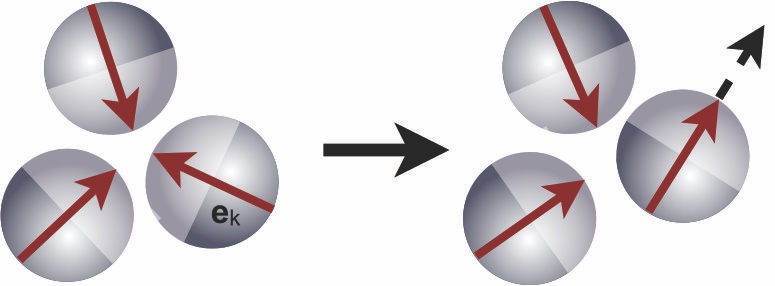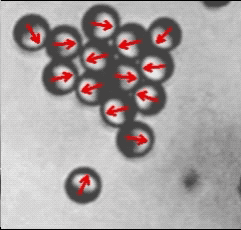
Active Clusters
Attractive interactions, e.g., depletion forces, between colloidal particles can lead to cluster formation in equilibrium systems. However, clustering phenomena have been observed also in several active systems which are intrinsically out of equilibrium. Examples include dense bacterial solutions, flocks of birds or living colloidal crystals of self-propelled phoretic particles. The emergence of this aggregation has been so far attributed only to alignment interactions or to effective forces that may appear alongside the driving, e.g., phoretic attractions. By means of a recently developed swimmer-system whose propulsion can be controlled by the incident light intensity, we study the complex dynamics of clustering which occurs in dense suspensions of self-propelling Janus colloids. Under the parameters used in the experiments, we attribute the clustering to a simple self-trapping mechanism where two or more particles colliding head-on cannot free themselves because of the persistence of their orientation. In particular, at low densities we observe the formation of small dynamic clusters, whose size and shape continuously varies due to collisions and rotational diffusion. At higher densities and larger propulsion speeds the active suspension undergoes a disorder-order phase transition and separates into few big clusters and a diluted gas phase. Numerical simulations based on a minimal model of purely repulsive active disks confirm the robustness of the experimental measurements.

| Dynamical clustering and phase separation in suspensions of self-propelled colloidal particles |
| I. Buttinoni, J. Bialke, F. Kümmel, H. Löwen, C. Bechinger, and T. Speck Phys. Rev. Lett. 110, 238301 (2013) |
